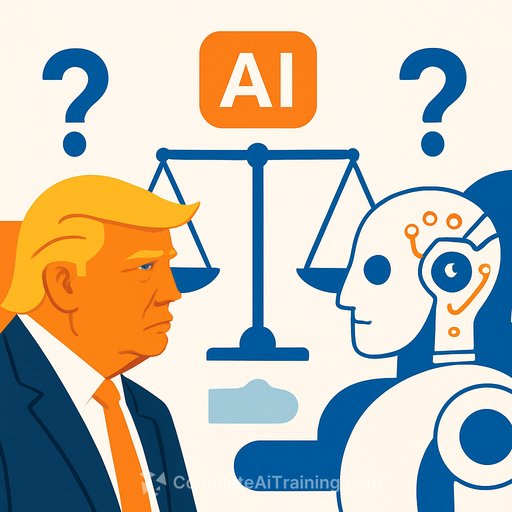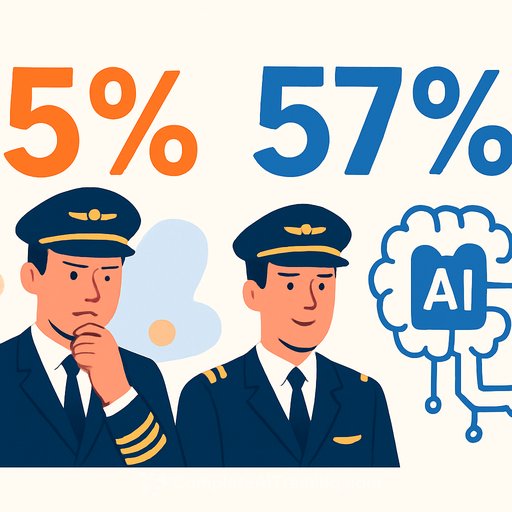Trump’s AI Executive Order: Ambitious Goals, Unclear Path
Last week, President Donald Trump signed an executive order targeting AI models sold to the federal government. Its goal: eliminate “ideological agendas” from these models, demanding they be “truth-seeking” and “ideologically neutral.” The order explicitly calls out the removal of ideologies related to diversity, equity, and inclusion (DEI).
While the intent may seem straightforward, experts warn the policy’s enforcement mechanisms and technical feasibility remain vague. The Office of Management and Budget (OMB) has 120 days to provide compliance guidance, but how companies will objectively measure “truth” or “neutrality” is unclear.
Shared Concerns, Different Priorities
Matthew F. Ferraro, a privacy and cybersecurity expert, points out that both the Trump and Biden administrations recognize AI’s risks and opportunities, including biohazards and labor market impacts. The key difference lies in priorities: Biden emphasizes protective measures upfront, while Trump focuses on innovation first.
Interestingly, some policy pillars overlap. For example, both administrations have proposed initiatives involving the Department of Labor regarding AI’s workforce effects. Yet, Trump’s order takes a unique stance on removing ideological content from AI, a move experts say is difficult to define or enforce.
Technical Challenges of Enforcing Neutral AI
For AI vendors, compliance could mean extensive and costly ongoing testing. David Acosta, cofounder of ARBOai, explains that early model training focuses on functionality, but long-term audits—called “red teaming”—are necessary to test for bias, accuracy, and compliance.
Red teaming involves third-party testers who probe models with thousands of prompts to detect hallucinations (fabricated or inaccurate outputs) and politically charged responses. Maintaining a “hallucination score” below 5% and ensuring models can express uncertainty are critical benchmarks.
However, this rigorous testing demands resources, potentially sidelining smaller firms from government contracts. Furthermore, many AI systems operate as “black boxes,” where decision-making processes are opaque even to developers, complicating accuracy and neutrality assessments.
Defining “Truth-Seeking” in AI
The concept of “truth” in AI is deeply tied to training data. Since datasets reflect human-generated content, they inevitably carry biases and errors. Removing ideological data such as race or gender details, as suggested by the order, risks skewing results and reducing accuracy.
Acosta highlights the subjectivity in filtering “overtly ideological” content. Who decides what qualifies? Historical examples show the meaning of “truth” evolves—textbooks from decades ago often contained outdated or biased information.
Ferraro adds that AI models do not inherently “know” truth; they generate probable outputs based on training. The idea of making AI ideologically neutral is more complex than simply filtering content—it challenges the fundamental nature of how AI functions.
Compliance and Enforcement Concerns
Legal experts like Peter Salib emphasize that the OMB must clarify what constitutes prohibited political ideology. Ambiguities, such as whether datasets tracking racial wealth inequality fall under DEI ideology, complicate compliance.
The order also suggests vendors might develop dual AI models: one for government compliance and another for the private market. Exceptions exist, such as for national security agencies, further complicating standardization.
Interestingly, the order allows compliance by disclosing AI training prompts and specifications rather than enforcing actual ideological neutrality. This means AI systems could still reflect a wide ideological spectrum, as long as vendors are transparent about their training methods.
Potential Outcomes for AI Strategy
If the OMB releases clear, technically sound requirements focused on accuracy and transparency, this could push AI companies toward greater openness about their models. For executives, this signals a shift toward accountability rather than ideological policing.
However, without precise definitions and enforceable standards, the policy risks being symbolic rather than practical. Organizations should watch for OMB guidance closely and be prepared to invest in ongoing model testing and transparency measures to maintain eligibility for government contracts.
For executives exploring AI governance and compliance, understanding these evolving federal requirements is essential. Staying informed through trusted training resources can prepare your organization for upcoming regulatory changes.
- Explore AI courses to deepen your understanding
- Consider certifications focused on AI and automation compliance
Your membership also unlocks:






